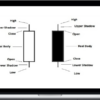Rene Le Cornu – Trade the Markets like a Professional
Have you ever wondered how some traders make consistent profits while others seem to always be struggling? The difference often lies in their understanding of market psychology, technical indicators, and trading strategy. But the journey to trading proficiency doesn’t have to come at the cost of countless losses.
Why This Course?
Cost-Effective Learning: The cost of learning doesn’t mean losing money on bad trades. Equip yourself market understanding to avoid common and costly trading pitfalls.
Master Market Psychology: Emotions play a critical role in trading. Our course delves deep into understanding market psychology, teaching you how to leverage and manage emotions to make sound trading decisions.
Expert Trading Strategies: Explore a plethora of trading strategies and find the one that suits your trading style and goals. Whether it’s trend-following, breakout trading, or long-term position trading, we’ve got you covered.
Risk Management Essentials: Learn how to protect your capital with risk management principles. Understand the nuances of position sizing, money management, and how they work together to safeguard your trading portfolio.
What You’ll Learn In Trade the Markets like a Professional
Introduction
Introduction to Trading
Trading Fundamentals
Economic Indicators and Their Impact on the Markets
Individual Company Financial Statements and Ratios
Conclusion
Charts
Different Types of Charts
Interpreting Candle Stick Charts
Importance of Timeframes in Chart Analysis
Overview of Different Timeframes and Their Applications
Minute Charts
Hourly Charts
Daily Charts
Weekly Charts
Choosing the Right Timeframe for Your Trading Style
Introduction to Multi-Timeframe Analysis
Timeframes in Trading – A Top Down Approach
Timeframes in Trading – A Bottom Up Approach
Combining Timeframes for Better Trade Decisions
Timeframes in Trading – Summary
Interpreting Chart Patterns
Understanding Chart Patterns
Market Participants and Their Influence on Market Psychology
Single Bar Patterns – Gaps and Windows
Single Bar Patterns – Doji Candlestick Patterns
Single Bar Patterns – Hanging Man Candlestick Pattern
Single Bar Patterns – Shooting Star Candlestick Pattern
Single Bar Patterns – Hammer and Inverted Hammer
Market Psychology of Chart Patterns
Identifying Market Trends
Trend Indicators
Support and Resistance Levels
Types of Trends
Trend Direction
Market Sentiment: Understanding Bullish, Bearish, and Neutral Market Psychology
Basic Trend Trading Strategies
Support and Resistance
Understanding the Basics of Support and Resistance.
Types of Support and Resistance
Importance of Support and Resistance in Trading
Market Psychology behind Support and Resistance Levels
Analyzing Candlestick Patterns at Support and Resistance Levels
Setting Entries and Exits Using Support and Resistance
Setting Risk Limits for Support and Resistance Trades
Implementing Support and Resistance Strategies: Bounce Trading Strategy
Implementing Support and Resistance Strategies: Breakout Trading Strategy
Implementing Support and Resistance Strategies: Fakeout Trading Strategy
Combining Support and Resistance Strategies for Optimal Results
Technical Indicators
Introduction to Technical Indicators and Market Psychology
Moving Averages
Moving Averages – Traders Thoughts
Fibonacci Retracements
Oscilators
What is an Oscillator
The Relative Strength Index (RSI)
The Stochastic Oscillator
Moving Average Convergence Divergence (MACD)
The Commodity Channel Index (CCI)
Williams Percent Range
Generating Entries with Oscillators
Understanding the Use of Oscillators in Trading
Trading Strategies
Introduction to Trading Psychology Techniques
Trend-Following
Break Out Trading
Chart Pattern Breakouts
Volatility Breakouts
Counter-Trend Trading
Divergences
Oscillator Overbought/Oversold Conditions
Range Trading
Support & Resistance Bounces
Moving Average Crossovers
Day Trading
Scalping
Momentum Trading
Swing Trading
Moving Average Pullbacks
Long-term Trend Following
Fundamental Analysis
Long Term Position Trading
Algorithmic Trading
Bollinger Bands Squeeze
Fibonacci Retracements & Extensions
Conclusion
Risk Management
Importance of Risk Management in Trading
Introduction to Position Sizing and Money Management in Trading
How Position Sizing and Money Management Work Together
The Need for Adaptability and Flexibility
Position Sizing and Risk Management
Risk Management – Final Thoughts
Market Psychology and Trading
The Role of Market Psychology in Trading
Emotions in Trading
Fear and greed
Optimism and pessimism
Euphoria and panic
The Four Key Emotions Fear, Greed, Hope, and Regret
The Impact of Fear on Trading Decisions
The Impact of Greed on Trading Decisions
The Impact of Hope on Trading Decisions
The Impact of Regret on Trading Decisions
Overcoming Emotional Barriers in Trading
Building Emotional Resilience in Trading
Building a Strong Trading Mindset
Stress in Trading
Avoiding Impulsive Trades
Developing a Consistent Trading Approach and Discipline
Goal Setting
Journaling
Visualization
Mindfulness
Developing a Trading Strategy
Introduction
Step 1 – Identify Your Trading Goals
Step 2 – Choose a Trading Method
Step 3 – Develop a Trading Plan
Step 4 – Backtesting
Step 5 – Forward Testing
Step 6 – Refine and Optimize Your Strategy
Order Types and Execution
Develop Your Trading Plan
Goals, Style and Strategy
Creating a Trading Plan and Sticking to It
Key Components of a Trading Plan
Importance of Adaptability in Trading
Monitoring Market Conditions
Adapting to New Market Conditions
Developing a trading plan that accounts for market psychology
Techniques for managing emotions while trading
Live Trading and Portfolio Management
Live Trading and Portfolio Management
Conclusion
Summary
The Ongoing Journey to Mastering Market Psychology and Technical Indicators
Embracing Adaptability and Growth in Your Trading Approach
Case Studies: Successful Traders and Their Use of Market Psychology and Technical Indicators
Trading Rules to Remember







